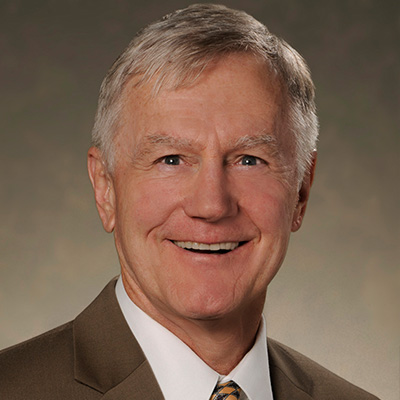
Stephen J. Annest, MD, FACS:
Dr. Annest is a founding member of the Vascular Institute of the Rockies. He graduated from the University of Washington Medical School, completed his Surgical Residency at Albany Medical College and Vascular Surgery Fellowship at Baylor Medical Center in Dallas, TX. He moved to Denver in 1995 from the Guthrie Clinic in Pennsylvania.
Dr Annest specializes in the treatment of thoracic outlet disorders working with luminaries in the field such as Dr. David Roos and Dr Richard Sanders. He has written extensively about the subject including the recent book Thoracic Outlet Disorders: Diagnosis and Treatment. Dr Annest was honored by US News and World Report in 2011 in the Top 1% of Vascular Surgeons in the Country. He and his wife Carol have been married since 1972 and have three children and eight grandchildren. He enjoys exercise, golf, skiing and spending time with his family.
Specialties:
- Thoracic Outlet Syndrome
- Peripheral Arterial Disease
Quick Facts:
- Practicing for more than 20 years
- Certified in Vascular Surgery by the American Board of Surgery
- CO and KS State Medical Licenses
Awards, Honors & Recognitions:
- CMS Stage 1 HER (2012)
- ACS Fellow
- America’s Top Doctors (2006-2014)
- CORE Magazine (2006)
Publications:
- Increased creatinine clearance following cryoprecipitate infusion in trauma and surgical patients with decreased renal function.
- Annest, S. J., Scovill, W. A., Blumenstock, F. A., Stratton, H. H., Newell, J. C., Paloski, W. H., Saba, T. M., Powers, S. R.
- Technique of supraclavicular decompression for neurogenic thoracic outlet syndrome.
- Sanders, R. J.,Annest, S. J.
- Neurogenic thoracic outlet and pectoralis minor syndromes in children.
- Sanders, R. J.,Annest, S. J.,Goldson, E.
- Cardiovascular hemodynamics after opsonic alpha-2-surface binding glycoprotein therapy in injured patients.
- Scovill, W. A., Annest, S. J., Saba, T. M., Blumenstock, F. A., Newell, J. C., Stratton, H. H., Powers, S. R.
- Increased intrapulmonary shunt following infusion of nitroglycerine or nitroprusside in patients with posttraumatic respiratory distress.
- Annest, S. J., Rhodes, G. R., Stratton, H. H., Newell, J. C., Powers, S. R.
- Nitroprusside and nitroglycerine in patients with posttraumatic pulmonary failure.
- Annest, S. J., Gottlieb, M. E., Rhodes, G. R., Paloski, W. H., Barie, P., Newell, J. C., Shah, D. M.
- Detrimental effects of removing end-expiratory pressure prior to endotracheal extubation.
- Annest, S. J., Gottlieb, M., Paloski, W. H., Stratton, H., Newell, J. C., Dutton, R., Powers, S. R.
- A system to measure functional residual capacity in critically ill patients.
- Paloski, W. H., Newell, J. C., Gisser, D. G., Stratton, H. H., Annest, S. J., Gottlieb, M. E., Shah, D. M.
- Further experience with the saphenous vein used in situ for arterial bypass.
- Leather, R. P., Shah, D. M., Buchbinder, D., Annest, S. J., Karmody, A. M.
- Amnion membrane improves results in treating neurogenic thoracic outlet syndrome.
- Sanders, R. J.,Annest, S. J.
Patient Testimonial: Nikki
Injured on the job as a result of manual labor, I was in pain for about a year before I finally found Dr. Annest. Because I was young, my workers compensation doctor thought physical therapy would be sufficient and he did not believe surgery was necessary. My symptoms included weakness, numbness, tingling, pain, inability to move my right arm above my shoulder and at times my ulnar nerve was cold and light bluish in color indicating loss of function in my arteries and veins. Despite these drastic symptoms, my workers compensation doctor still didn't think that surgery was necessary. I decided that something needed to be done and that’s when another doctor agreed and sent me to Dr. Annest who quickly cited that I had all the symptoms of Thoracic Outlet Syndrome, which oftentimes can be fixed with physician therapy at my age, however, that was not the case for me. At this point I was on my sixth physical therapist in a year and not only did I achieve little to no improvement, each day was harder than the previous. Dr. Annest was committed to determining the cause and appropriate treatment for me to heal properly which included a first rib resection and release of both pectoral minor and scalene muscle. He personally called my case worker and fought for this surgery to get approved, which it finally did. I am a little over two months post-op with almost no symptoms left in my right arm besides some weakness and soreness, which are common to have after a major procedure like that. I am so thankful I went to an outside opinion besides my workers compensation doctor. I now have the normal life a 23-year-old girl should have.